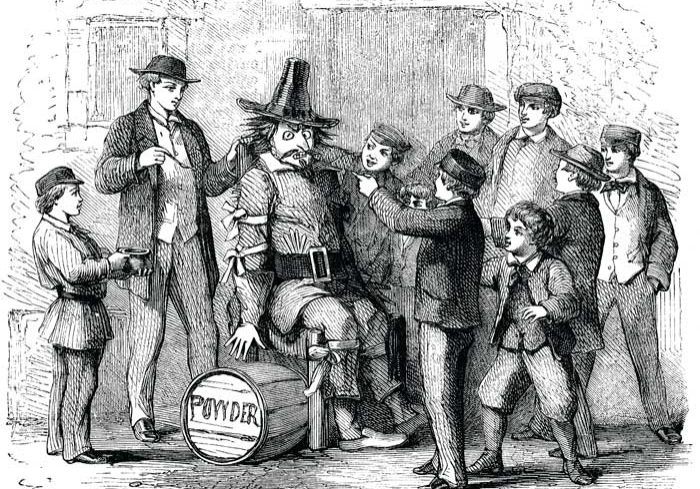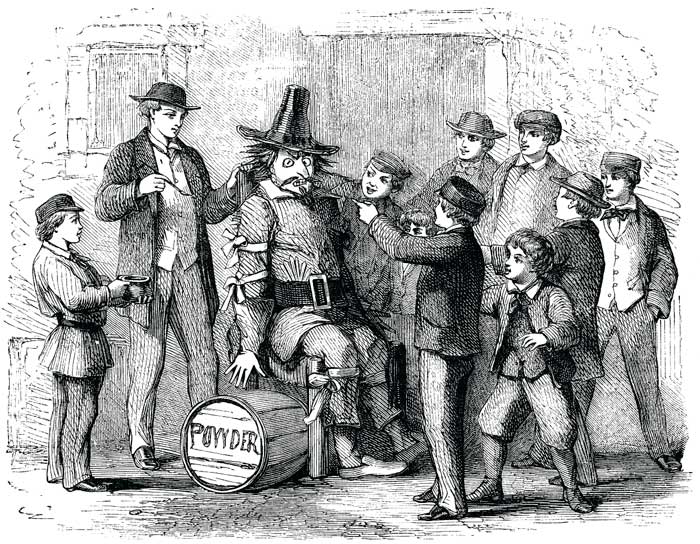
It’s Bonfire Night!
by Northern Life
Remember, remember the fifth of November,
It’s Gunpowder Plot we never forgot,
Put your hand in your pocket
And pull out your purse
A half penny or a penny will do you no worse.
When Guy Fawkes was caught guarding a hoard of explosives destined to blow up the London’s Houses of Parliament and assassinate the King on 5th November 1605, little did he realise that his arrest and subsequent execution would be celebrated across the country over 400 years later.
After Christmas, the Gunpowder Plot or Bonfire night is possibly the second most favourite festival for children. However, I think a lot of the fun has gone out of today’s Plot night due to the introduction of Health and Safety legislation and other local regulations.
Nowadays, we tend to have large organised bonfires with separate firework displays and so many young children simply let off their fireworks in their back gardens under the supervision of their parents.

“It is alleged the King received an anonymous letter telling him about the plot”
I often wonder if the children of today get the same sense of thrills and excitement as I had when I was a boy.
I have such wonderful childhood memories of my Bonfire Night as a young boy.
It usually began with ‘our gang’ going round to the various houses in our area asking for wood or anything else that would burn for our fire. I remember one year we actually got an old wooden table and two rickety chairs from one lady. We would take our wood and store it in either someone’s backyard or garden shed so that no one pinched it until we had time to build the fire.
In ‘our gang’ were Raymond, Gordon, Peter, Geoffrey and Geoffrey’s young sister Alison and me.
Peter’s father made us a super Guy using some of Peter’s old clothes stuffed with straw with a cardboard cut-out for a face. We would put the Guy in Alison’s old pram and went around the streets asking passers by for ‘Penny for the guy, penny for the guy.’ Any money we got went to buy one or two more fireworks. A couple of nights later two of our dads built the fire on a piece of spare ground near to our houses with everything we had collected. Then it was up to our gang to stand guard over our hoard of timber and the fire each evening; that is, until it was time to go to bed.
When the big night arrived, it’s amazing how unruly children would become little angels after hearing the words: “If you don’t behave yourselves you won’t go to the bonfire tonight.”
Tea was over in a flash and we all went out to the bonfire to get ready for the night’s fun. The chairs were for the elderly and the table was laden with slabs of parkin cake and dishes filled with plot toffee (treacle toffee wrapped in greaseproof paper). There were pots of tea for the mums and dads and homemade lemonade for the children.
A cheer would ring out as the bonfire was lit and soon it was time to let off our penny bangers, flip flaps, snow pyramids, Catherine wheels and Roman candles and many others, with each father taking it in turn to let off their fireworks while we waved our sparklers and marvelled at the spectacular display.
There was the occasional rocket (not many because they were rather expensive) which you put each one in an old milk bottle to keep it upright to make sure it went straight into the sky. Potatoes were put in the embers of the fire to roast and when they were ready you speared them with a stick which had a sharp point on it. They were often charred black and very hot to touch.
Soon, it seemed like after no time at all, the chairs and the table had long since gone on to fuel the fire, with flames dying down we would hear our mother’s saying: “That’s it for this year. It’s long past your bedtime you know.” Happy and contented off we’d go to bed as it was all over for another year.
Ah, the dreams of long, long ago. Do today’s youngsters really know the history of Bonfire Plot ? I often wonder. So who was Guy Fawkes and what was Gunpowder Plot?
The Gunpowder Plot was conceived by a group of Catholic sympathisers after King James I of England (and 6th of Scotland) broke his promise to give the Catholics more freedom to worship, following the harsh treatment they had received under Elizabeth I.
They decided to plot their revenge by renting a cellar under the House of Lords and storing a large number of barrels of gunpowder and firewood, which had they exploded would have reduced the whole building to rubble.
It is alleged the King received an anonymous letter telling him about the plot. The King and his men immediately went to the cellar and caught the conspirators who were arrested and eventually tried and executed.Following the trial, bonfires were lit all over London and a law was passed declaring 5th November a public holiday. Ever since that day, bonfires have been lit on the 5th November to commemorate one of Britain’s most memorable acts of treason.
There have been other occasions when bonfires have been used to warn us of impending danger or to celebrate a joyful occasion.
It is said that a line of bonfires was lit across England to warn the people of the coming of the Spanish Armada and earlier this year we celebrated the 70th anniversary of VE day (Victory in Europe) with bonfires just as they had been on the 18th May 1945.



